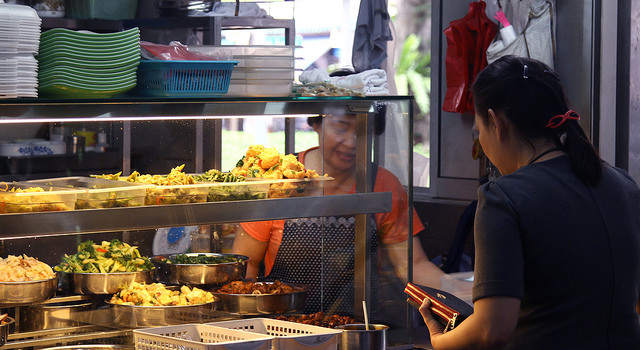Hawker centres — the prime topic of discussion on the first day of Parliament's year-end sitting on Monday.
And so by extension, Minister for the Environment and Water Resources Masagos Zulkifli and Senior Minister of State Amy Khor spoke at length to respond to a laundry list of questions filed by some 13 concerned Members of Parliament, in particular about the contentious Social Enterprise Hawker Centres (SEHCs).
In sharing his response to eight of these questions, Masagos opened with a history lesson about hawker centres, Singapore's "signature community dining rooms", that we thought was useful to share as well.
Take the government's move to build more hawker centres starting seven years ago, for instance —
A ballast to stabilise prices
Masagos explained that before 2011, the government had stopped building hawker centres for almost 30 years.
In those 30 years, there was a boom in coffee shops and food courts and market forces pushed up rentals and food prices for these private F&B outlets.
With Singaporeans concerned about the rising cost of living and the lack of affordable dining-out options, the authorities, in 2011, "resumed building hawker centres to serve as a ballast to stabilise cooked food prices against the emerging dominance of coffee shops and food courts".
Masagos shared that 20 new hawker centres will be built by 2027. Each costs S$15 million, and the government will absorb building costs and subsidise their ongoing maintenance. These sunk costs, he adds, are not recovered through stall rental.
Balancing hawker welfare and feeding Singaporeans
Masagos shared that since the early 1970s, hawker centres were built to resettle street hawkers to "improve hygiene and food safety standards".
However, over time, "a good number" of these first- and second-generation hawkers, who "receive cheap subsidised rentals, only work short hours", he added.
Masagos shared this observation:
"I was at Shunfu Mart Food Centre during a recent Ministerial Community Visit in Bishan East-Thomson Constituency. The hawkers only open for breakfast and lunch; some even just for breakfast. Residents do not have access to affordable food in the evening."
But Masagos was quick to add that hawkers' well-being must at the same time be safeguarded given that hawker work is physically demanding.
He shared that the median age of hawkers was now 60 years old, and one third of our hawkers and their assistants will retire in the next 10 years.
Explaining that there a need for what he describes as "the careful balancing act to look after the interests of both hawkers and the community", Masagos said:
"Ultimately, hawker centres exist to serve Singaporeans. But we also have to be fair to hawkers and safeguard their well-being."
The challenge of being a hawker today
Masagos outlined the difficulties that hawkers at hawker centres face in this day and age, with competition from coffee shops, food courts, other food outlets as well as food delivery services and central kitchens.
Hence, he says, the need to help hawkers find new operating models that are more sustainable for them; hence the introduction of new approaches like SEHCs.
Top photo via
Content that keeps Mothership.sg going
??
Here's how you fake being artsy to impress your date/boss/future mother in law.
?
Read this and cry in a corner.
? ?
Kids teach us the darndest things. But it makes sense.
???
Earn some karma points here. Say real one.
??
Wanna run away from your responsibilities?!
If you like what you read, follow us on Facebook, Instagram, Twitter and Telegram to get the latest updates.
